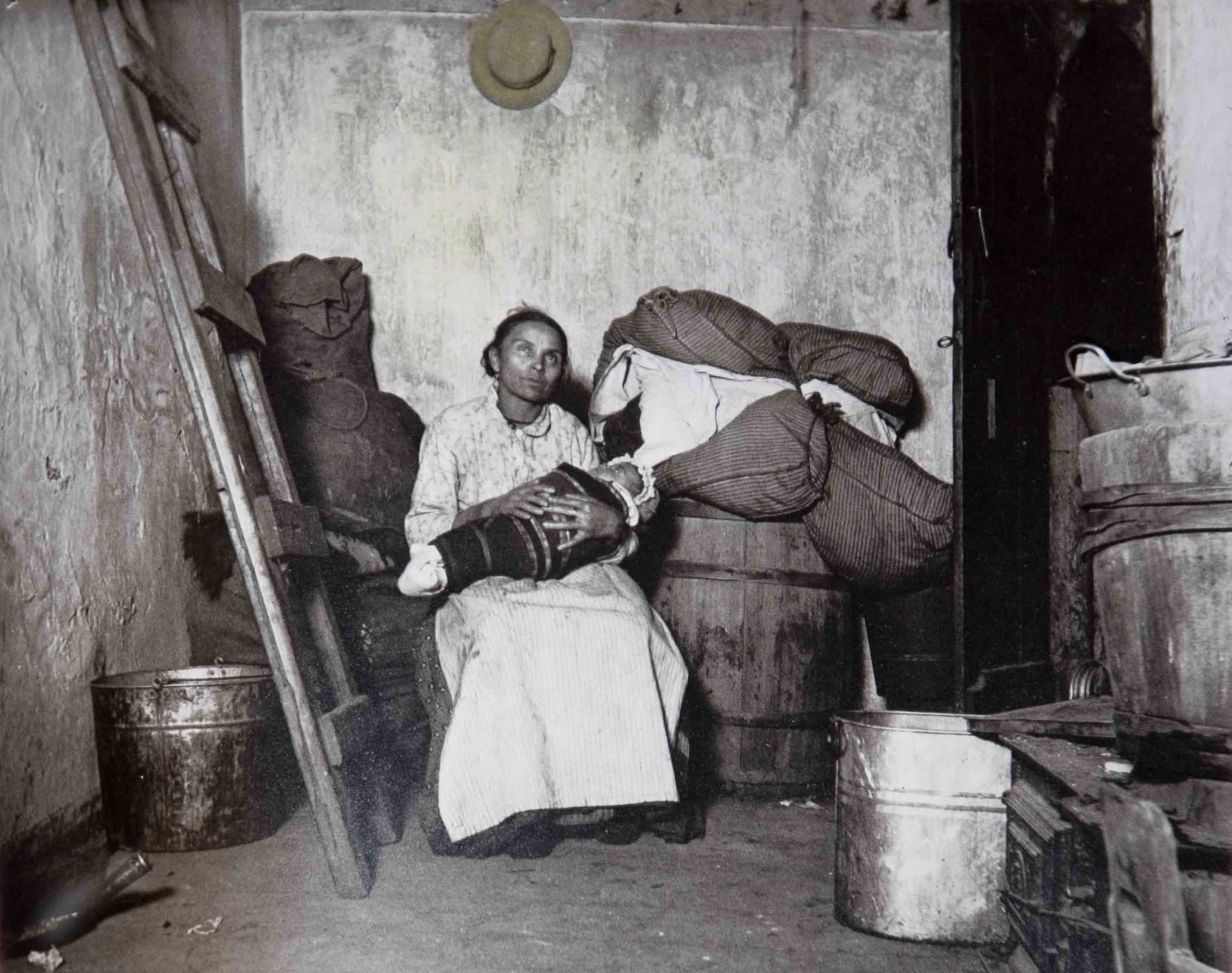
Innovation Retrospectives. Part IV of the series
In A Journey through NYC religions Retropectives trace the continuing effect of religious innovations that happened in New York City. Sometimes, these innovations were new ways of doing what are thought of as non-religious things. For example, Jacob Riis brought a new way of doing journalism and photography in order to realize certain religious values.
Riis wanted to move New Yorkers’ hearts to incline to compassion to the poor, particularly the poor immigrants. He wanted to show the desperate plight of the poor while also showing them as individuals of great dignity and worthy of respect. He wanted to show the poor in their authentic existence, caught in an unguarded moment where life is not tidied up and dignity manufactured simply for the sake of the camera lens. So, he came up with a Journey-style method utilizing a new German technology called a flash gun that would provide instantaneous bright light so that photos could be taken in the dark, He suspected that the technology would provide instantaneous exposure of the dark alleys, hovels and places of misery on the Lower East Side while showing the unfeigned dignity of the poor.
The journalist went out with some friends to practice using this new flash gun. The results were uneven; the threat of putting too much gunpowder on the flash plate was all too real. Some of the experiments left the photography group covered with black soot or blind from so much light. Gradually, Riis got the process to work. Then, he went to the Lower East Side.
His method was to show up at a family’s home and gain an invitation to take a photo. No one knew exactly what was going to happen. Then, just as everyone was relaxed, unexpectantly, the new fangled flash would go off catching everyone off guard, providing a pure moment of life relatively unguarded.
Take the example of Riis’ photo of a young Italian immigrant woman and her child in a windowless basement in the Lower East Side. These cellars were refrigerators of misery. Riis set up and asked to take a photo. The woman probably wondered how he could take a photo in the dark. She grasped her child and waited. In the short time that Riis was with her he appears to have won her trust. Her face is not fearful or suspicious.
The flash photo shows a small, bare basement with no windows. She and the child are bundled up against the cold, possibly there was no heat. The miserable conditions are clear. Also, we clearly see her dignity and worthiness of our admiration.
On our left leaning against the wall is a broom and a dust pan. The basement that sucked down the smelly dust from the filthy streets trodden upon by horses seems spotless! It is orderly and well-kept. She is simply but neatly dressed as is her child who is bundled up and held with care. Above the woman’s head is a round straw hat that hangs on the wall looking faintly like a halo above her head. Riis called this photo his portrait of a Lower East Side Madonna and child. Notice how the religious tone of the photo, the dignity of the woman, the comforting order to the room rest within a scene with plenty of misery. Riis is asking, shouldn’t we help Mary and her son Jesus who are living in the stable?
It is very hard to show misery and dignity at the same time. He didn’t just portray pitiable figures. He didn’t just show admirable figures. He brought pity and dignity together. Riis was highly motivated to accomplish this hard task by his Christian values of compassion and the belief that every human had a great dignity given by God. He spent a lifetime of trying to realize this type of journalistic artistry. When he converted to evangelical Christianity at the 18th Street Methodist Church in Brooklyn in June 1874, he swore that he would consecrate his journalism to the purposes, values and methods of Jesus. Riis was trying to do photography as Jesus would do it. Riis innovative photography helped to create photojournalism and the field of making photo documentaries.
+++++++++++++++++++++++






Leave a Reply